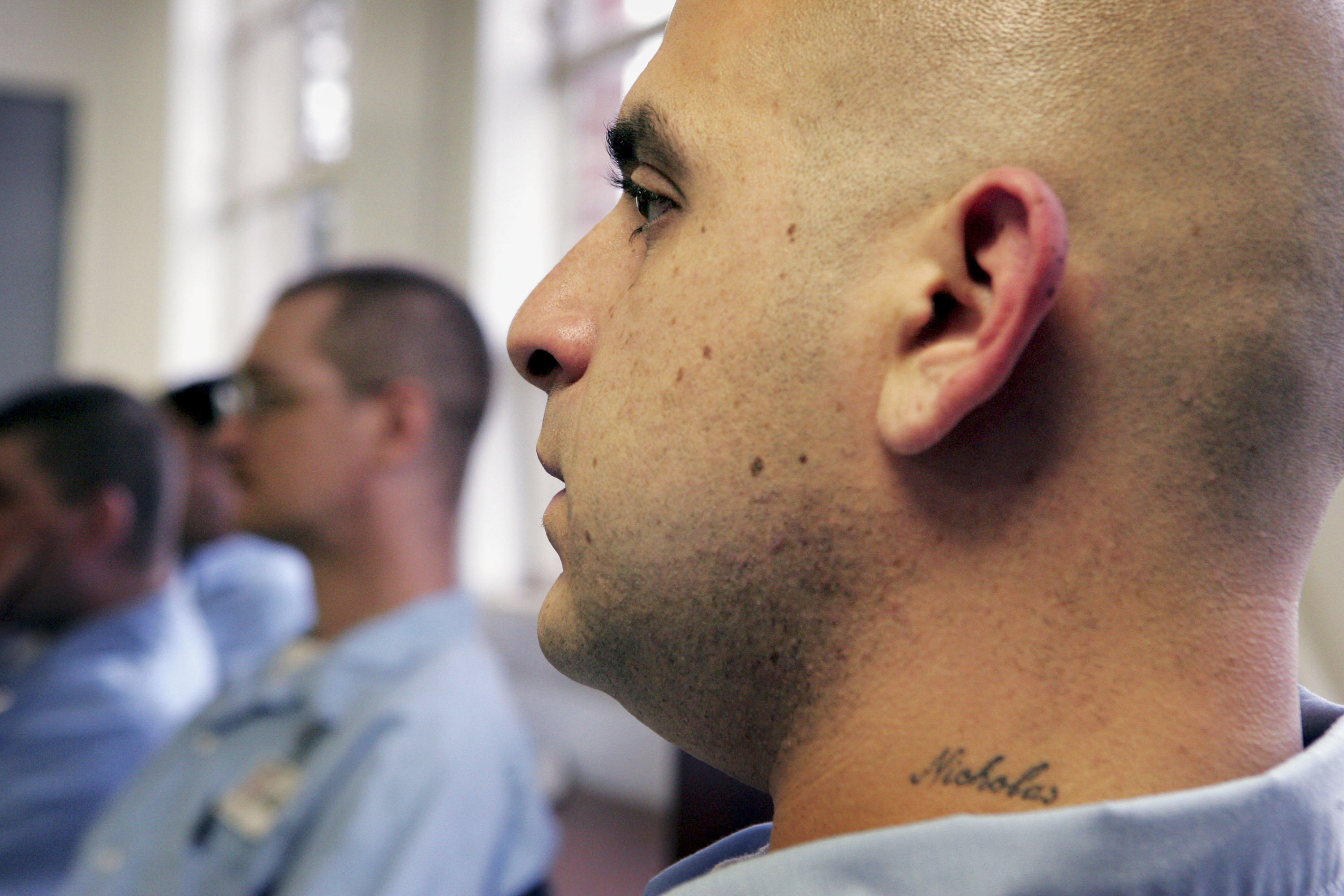Damien Echols: The true crime stuff I think it has good points and bad points; Good points because it is literally saving people's lives. When you're talking about cases where you have innocent people sentenced to death, you have innocent people doing life without parole, and it happens way more often than people have any idea. A guy named Bryan Stevenson who works with the Southern Poverty Law Center, I was talking to him one time and he said that they now estimate that maybe as many as one out of every ten people executed are innocent. Now if one out of every ten planes crashed nobody would fly anymore. Everybody would demand that something be done before they got on another plane. But most people don't know anyone and they're not connected in any way to the death penalty. So it's sort of just being swept under the rug in a lot of ways.
So the true crime stuff is bringing stuff like that into mainstream attention. It's saving people's lives. On the other hand you have the other stuff, the really tawdry—and I can't think of a case right off the top of my head—but just people like to sort of wallow in the darkness of humanity a little bit. Say people who want to read stuff about Richard Ramirez, the night stalker guy, stuff like that. That sort of goes the other route. I think whatever you focus on is going to sort of dictate the direction that your life moves. If you focus on things that inspire you, that uplift you, that raise you up, you're going to be a happier person. If you're focusing more on the basest, just bottom dregs of human activity then you're probably not going to be a very happy person. It's going to manifest in depression and despair and things like that.
So I see the good points of true crime and I see the bad points of true crime. For me personally I tend to stay away from it. I honestly have not even seen the Paradise Lost documentaries. I tried to watch them, I made it through 15 to 20 minutes of the first one, and I could understand why it had such a big impact on people because when I was watching it, it felt like being in the courtroom. It was like experiencing it again. And, for me, that was the last thing in the world that I wanted. That was—it ate up 20 years of my life, so the last thing I wanted to do was go back there. At the same time I'm grateful that so many other people did watch it and were affected by it and came to our aid, because it saved my life. But that doesn't mean I want to watch it.
The hardest parts of being in prison, the worst parts to deal with were just the sheer brutality of it. You know, there were times when I was beaten so bad that I started to piss blood. They're not going to spend a lot of time and money and energy taking care of someone they plan on killing. So it's not like you're going to see a real doctor or a real dentist. At one point I'd been hit in the face so many times by prison guards that it had caused a lot of nerve damage in my teeth, so I was in horrendous pain. Your choices are: live in pain, or let them pull your teeth out. I didn't want them to pull my teeth out, so I had to find techniques that would allow me to cope with the physical pain. That was probably the biggest thing that kept pushing me forward to learn more and more and more about magick, because I had to find ways just to survive.
Magick, spelled with a K at the end, M – A – G – I – C – K, the reason it has a K is to differentiate it from sleight of hand, you know, sawing assistants in half, pulling rabbits out of a hat, things like that. The entire point of high magick it is a path that leads to the same things that Eastern traditions refer to as "enlightenment," which is the dissolution of the self. The form that I practice derived, for the most part, from the late 1800s in London. You had a group of people, they called themselves the Hermetic Order of the Golden Dawn—some really intelligent people, the beloved poet W.B. Yeats was a member. What they set out to do was look into all religious traditions in the world and get to just the practices, you know, strip away the dogma, the belief systems, things like that, and get to just the practices. And they wanted to figure out what works, why it works, how it works, and how we can make it work better. And it's ideally suited to people in the West because it uses like I was saying Christian, Judaic, things of that nature iconography. So it's things that are really deeply ingrained in our psyches already.
When I was in prison I actually also received ordination in the Rinzai Zen tradition in Japanese Buddhism. It was a tradition that used to train the Samurai in ancient Japan. So I sat Zen meditation for years, and I still feel like I got more out of ceremonial magic in months than I did Zen in years just because it is more—it deals with things that are more deeply ingrained in the Western psyche than Eastern traditions do.
One of the goals of high magick is to achieve the same thing that in Eastern traditions they call enlightenment. Think of it, for example, think of yourself as a cup of water. Now if you just leave a cup of water sitting somewhere for a long period of time it starts to stagnate. It's going to accumulate debris, maybe it's even going to start to clot up over a long enough period of time. What ceremonial magick tries to do is invoke certain energies into your system. Now if you were to take that cup of water, that stagnant cup of water, and just hold it under a running faucet and just let it run until it spills over the rim and hold it there and just let it spill and spill and spill, eventually what's going to happen is all that debris, all that stagnation is going to be washed out. The same thing happens to us on an energetic level when we're constantly invoking all these energies. The reason they're planetary, astrological, elemental, they're still all variations of a type of energy that we have a name for in every single culture in the world except ours. For example, the Chinese call it chi. The Japanese call it ki. The Hebrews call lit ruach. The Indians call it prana. In the West we're the only ones who don't really have a name for it, so that's kind of why I prefer just the generic term of "energy."
You know, when it comes to resiliency I think the thing that saved my life in there was: I found what I was supposed to be doing in life. As crazy as it sounds, there were entire weeks would go by when I didn't even think about the fact that I was in prison because I was so focused on magick. You know even now people will come up to me, people who have been through horrible things, people who suffer from depression of some sort, and they say, "What got you through that? What would bring you through these things?" And the honest answer is there are only two causes of depression. One is a chemical imbalance, in which case the only thing that's going to correct it is medication, something of that nature to correct a physical problem. The other cause in one way or another is you're not doing what in magick we call your "will." In Buddhism they call it dharma. It's the thing that you're put here to do. Nature, the universe, is not going to waste a lot of energy making duplicate people, making cookie-cutter people. We're all here for a specific purpose. Now your purpose may be similar to someone else's, but it's not going to be exactly the same. Because like I said the universe isn't going to waste that energy. The cause of happiness and the cause of depression is figuring out what you're supposed to be doing in this life and then dedicating yourself to it, one hundred percent, to the best of your ability. For me that was doing magick. When I started to devote every minute of every day to doing magick while I was in prison, by the time I got out I was doing it eight hours a day. Once I started to do that everything else took a backseat. I still went through horrendous things like beatings or starvation or whatever it was, but once it's done I'd get right back up and I'd go to doing magick, because it was what I loved.
It was, you know, when I started to figure out what was possible because of this and how it was affecting me on a mental level, on an emotional level, on a physical level, I was so excited about it that everything else just faded into the background, and I was happy. Even in prison, even on death row, for huge chunks of time I was happy, because I was doing what I was supposed to be doing in the world. And still to this day the example I always give to people is Michelangelo. Whenever they asked him, "How do you create these sculptures?" he said, "Well, I just look at the block of marble and I carve away anything that's not part of the figure." That's where happiness comes from. You look at your life and you start carving away anything that's not pertinent to your life's mission. So for me for example I don't go to parties, I don't go to clubs, I don't go to concerts, I don't chitchat. For me anything that is not directly connected to magick I have gradually carved away from my life and it has made me a much, much happier person. Social media I honestly now I try to stay away from it as much as I possibly can. I think it can be useful for really down-to-earth practical things like letting people know, for example, I'll use it to let people know where I'm going to be doing a meditation class and things of that nature. But at the same time I think it is incredibly detrimental as far as what we're putting our energy into. Part of what magick is is containing our energy, containing our chi, because we disperse it constantly. We disperse it in everything we think about, everything we talk about. And I saw a study come out about a week or so ago where scientists were pretty much saying we are now practically one generation away from the extinction of humanity due to climate change, global warming and all this sort of stuff. Yet the only thing that people were talking about on social media was Kanye West at the White House!
So it really can be detrimental to our development if you let the meaningless things or if you just spend hours and hours a day combing through Instagram photos of people taking selfies and things like that. I think you really have to be careful with everything you consume, and not just in a physical way but mentally and emotionally as well, as well as everything that you put out; I always try to be as mindful as I possibly can about whatever I take in through the Internet and whatever I put out through the Internet.





